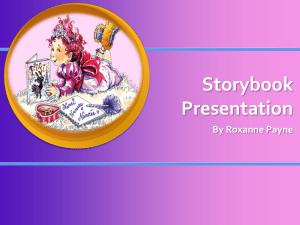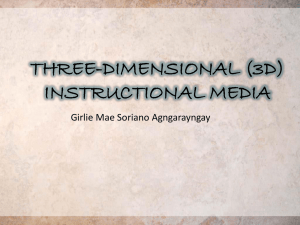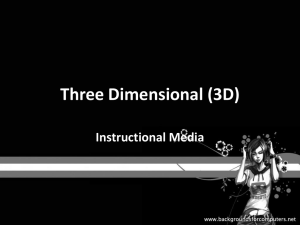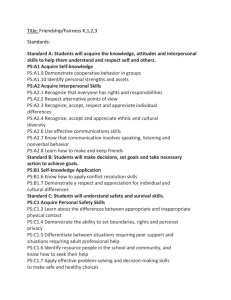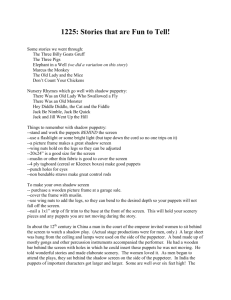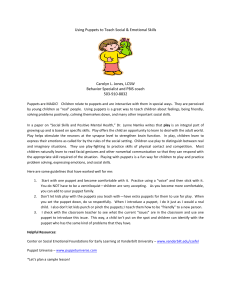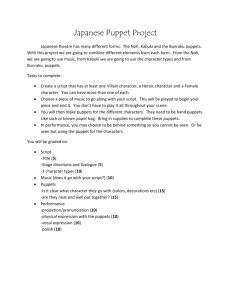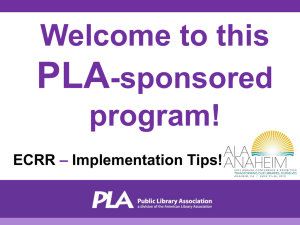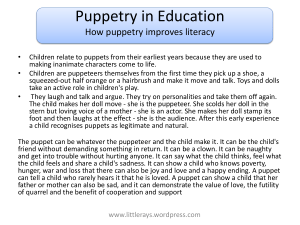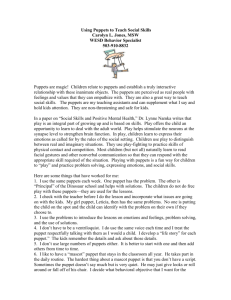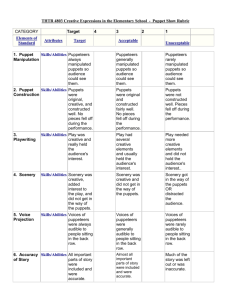Problem-Solving Classroom Lesson Attachment
advertisement
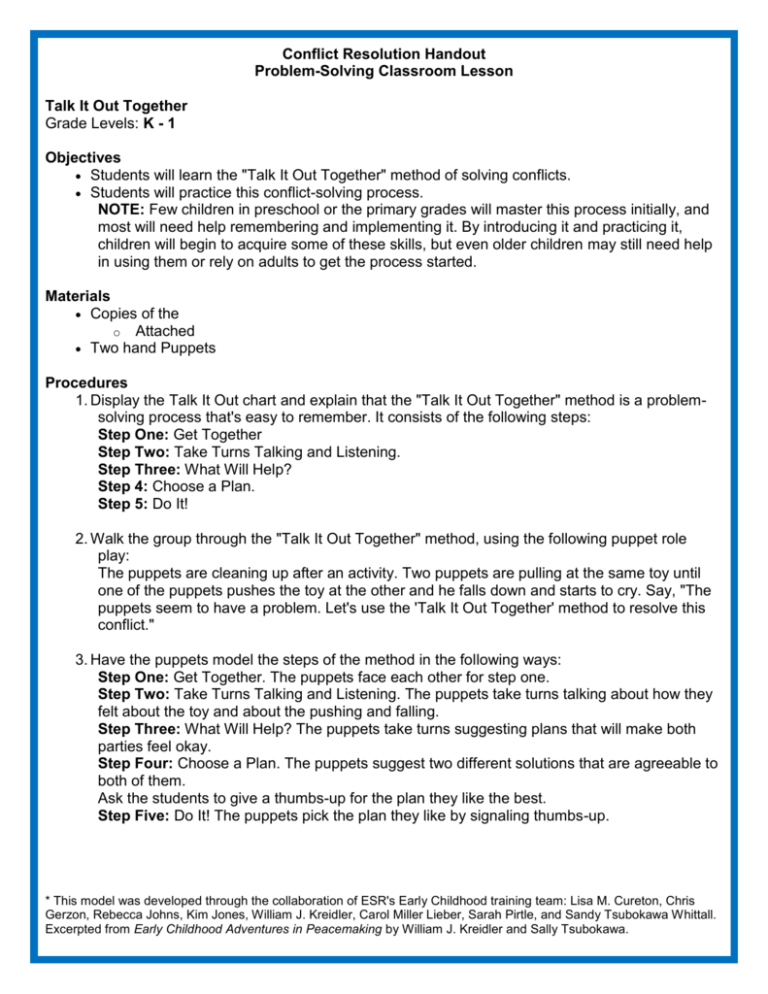
Conflict Resolution Handout Problem-Solving Classroom Lesson Talk It Out Together Grade Levels: K - 1 Objectives Students will learn the "Talk It Out Together" method of solving conflicts. Students will practice this conflict-solving process. NOTE: Few children in preschool or the primary grades will master this process initially, and most will need help remembering and implementing it. By introducing it and practicing it, children will begin to acquire some of these skills, but even older children may still need help in using them or rely on adults to get the process started. Materials Copies of the o Attached Two hand Puppets Procedures 1. Display the Talk It Out chart and explain that the "Talk It Out Together" method is a problemsolving process that's easy to remember. It consists of the following steps: Step One: Get Together Step Two: Take Turns Talking and Listening. Step Three: What Will Help? Step 4: Choose a Plan. Step 5: Do It! 2. Walk the group through the "Talk It Out Together" method, using the following puppet role play: The puppets are cleaning up after an activity. Two puppets are pulling at the same toy until one of the puppets pushes the toy at the other and he falls down and starts to cry. Say, "The puppets seem to have a problem. Let's use the 'Talk It Out Together' method to resolve this conflict." 3. Have the puppets model the steps of the method in the following ways: Step One: Get Together. The puppets face each other for step one. Step Two: Take Turns Talking and Listening. The puppets take turns talking about how they felt about the toy and about the pushing and falling. Step Three: What Will Help? The puppets take turns suggesting plans that will make both parties feel okay. Step Four: Choose a Plan. The puppets suggest two different solutions that are agreeable to both of them. Ask the students to give a thumbs-up for the plan they like the best. Step Five: Do It! The puppets pick the plan they like by signaling thumbs-up. * This model was developed through the collaboration of ESR's Early Childhood training team: Lisa M. Cureton, Chris Gerzon, Rebecca Johns, Kim Jones, William J. Kreidler, Carol Miller Lieber, Sarah Pirtle, and Sandy Tsubokawa Whittall. Excerpted from Early Childhood Adventures in Peacemaking by William J. Kreidler and Sally Tsubokawa. Conflict Resolution Handout Problem-Solving Classroom Lesson Attachment Conflict Resolution Handout Problem-Solving: Compromise Brainstorming for Consensus Grade Levels: K-12 Objectives Students will learn how to brainstorm. Students will learn how to come to a consensus. Materials An ordinary object such as a box, a wooden spoon, or a cardboard tube, etc. Procedures 1. Explain that the purpose of brainstorming is to come up with as many ideas as possible in a short period of time, using the following rules: a. During the brainstorm no one says whether the ideas are good or bad, sensible or silly, workable or not workable. b. The point is simply to get out as many ideas as they can. c. Tell students that after the brainstorm is finished, they will evaluate the ideas. 2. Set the object in front of the group. 3. Ask students to suggest all the things that they could do with the object. 4. Write their suggestions on the board. 5. After a few minutes, or after energy for the brainstorm runs down, end the brainstorm. 6. Tell students they will be reviewing each idea individually and voting with a thumbs-up or thumbs-down sign to signify whether they think an idea is workable or unworkable. 7. Put a mark by each idea that the majority of the group thinks could work. 8. Allowing students to vote only once, conduct a poll in which students give a thumbs-up for their favorite idea. 9. Tally the marks to find the students' favorite idea. 10. Review STAR strategy for problem-solving conflict Excerpted from Early Childhood Adventures in Peacemaking by William J. Kreidler and Sally Tsubokawa. http://www.teacherspayteachers.com/Product/Conflict-Resolution-Poster-STAR-Power-917053 Conflict Resolution Handout Problem-Solving Reflection Becoming A Problem Solver Problem: Tell who, what, how and why it happened --------------------------------------------------------------------------------------------------------------------------------------------------------------------------------------------------------------------------------------------------------------------------------------------------------------------------------What was the result? 1. 2. --------------------------------------------------------------------------------------------------------------------------------------------------- How could I have prevented the problem? --------------------------------------------------------------------------------------------------------------------------------------------------------------------------------------------------------------------------------------------------------------------------------------------------------------------------------What did I learn that I will help me in the future? --------------------------------------------------------------------------------------------------------------------------------------------------------------------------------------------------------------------------------------------------------------------------------------------------------------------------------How could I have solved the problem? List 2 alternative methods. 1. 2. --------------------------------------------------------------------------------------------------------------------------------------------------- My Signature ------------------------------------------------------------------------------------http://specialed.about.com Date ---------------------
